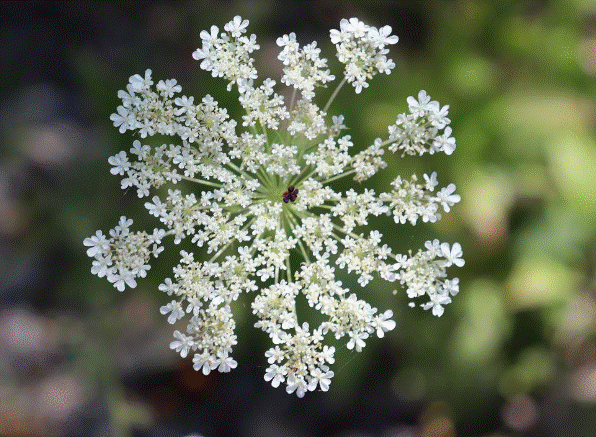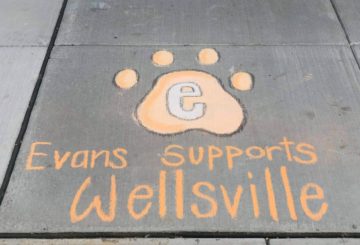By Bob Confer
Wildflowers of the late-summer and fall get a bad rap. Too often, people classify them as weeds which is a really unfortunate title for these plants, many of which are extremely beautiful and should be a welcome addition to any lawn or hedge. Among them is Queen Anne’s Lace, which is in full bloom now.
Identifying Queen Anne’s Lace
Everyone has seen Queen Anne’s Lace. It is a ubiquitous white wildflower, up to 3 feet tall, that is found in dry soils throughout the area. You will see impressive stands of them on roadsides, along trails, in pastures, or in hedgerows.
If you look closely, you will see that what you thought was a large white, circular flower is really an umbel, or a collection of dozens of small flowers coming from a single stem. Collectively, they make for a lace-like appearance, hence the name. I’ve always thought this plant was best compared to a doily.
Some of them, but not all, will have a lone purple flower near the center of the umbel.
No one knows why that loner exists – some botanists blame a genetic flaw, while others say that it makes insects assume that there is a bug on the umbel, which in turn attracts predatory wasps to the plant, which in turn become incidental pollinators.
The myth behind that random, dark flower is that Queen Anne, when she was sewing the lace of this plant, pricked herself with her needle and it’s a drop of her blood that darkened that flower (by the way, no one knows for sure if it was named after Queen Anne of Great Britain or Queen Anne of Denmark).
The stem of the plant has many fine hairs. That stem is very solid and strong as anyone who has ever attempted to pick Queen Anne’s Lace can attest. It takes a really good pull to snap the stem, and you are apt to uproot the whole plant in the process.
As the summer progresses and the flowers have done their deed, they wilt and curl up, becoming brown and cup-like; hence another common name: bird’s nest.
Wild carrot
The Queen Anne’s Lace is a non-native species. It was brought here from Europe because early settlers needed a foodstock and the prolific wildflower provided it. Queen Anne’s Lace was a precursor to the cultivated carrot. It produces a root that smells and tastes just like the carrots you know and love. Unlike farmed carrots, the roots are very small (1 to 3 inches) and it takes quite a few to make a meal. The roots need to be picked when young. As they age, they become starchy, even woody, and do not taste good at all.
Health hazards
I strongly suggest against eating any wild carrots unless you are extremely familiar with the plant and its look-alikes. Queen Anne’s Lace can be easily confused with its cousin, the poison hemlock, the same plant that infamously killed the Greek philosopher Socrates. Death by consumption of poison hemlock is painful and labored – it causes muscular paralysis which ultimately prevents respiration from occurring, so the poisoned individual slowly, not quickly, suffocates. As few as a half dozen hemlock leaves will lead to death.
You also need to be careful when picking Queen Anne’s Lace if you are looking to make a centerpiece of the flowers. That’s because the plant juices can cause phytophotodermatitis.
If you’ve seen every summer the scary news reports on TV or online about giant hogweed then you are familiar with what that is. A plant’s juices get on a person’s hands, which leads to hypersensitivity to ultraviolet light for approximately 24 hours; the skin, being unable to protect itself from the sun, blisters. So, if you’re going to pick these flowers, wear gloves. And, encourage your kids to not touch the plants. The rash and blistering from Queen Anne’s Lace is nowhere near as pronounced as it can be with hogweed; this wildflower can be benign for most and will affect mostly people with already sensitive skin.







